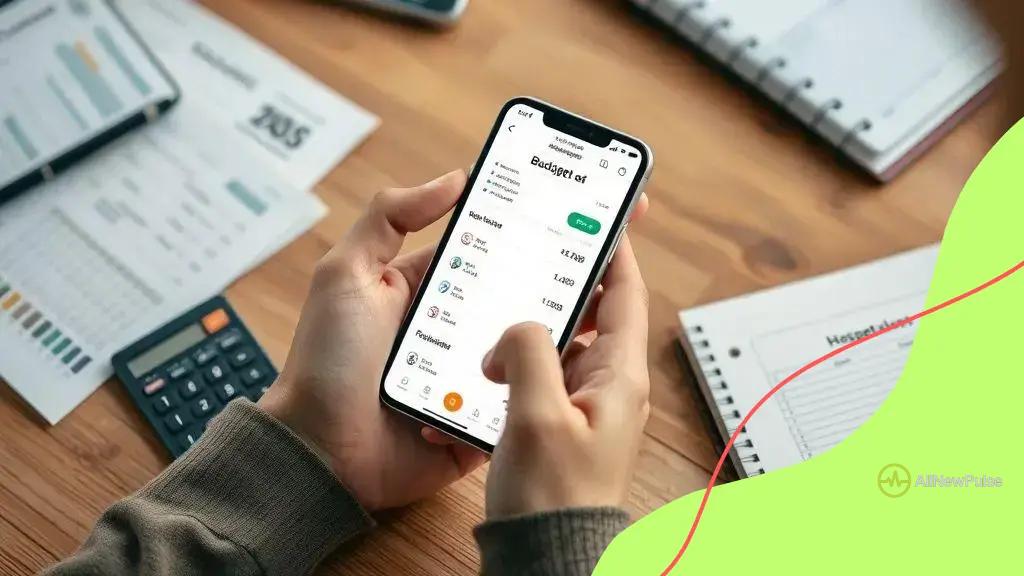Smartspending: Maximize Your Budget with These Tips

Smartspending involves making informed financial decisions to maximize the value of every dollar, focusing on budgeting, tracking expenses, and avoiding common financial mistakes.
Smartspending has become a buzzword for those looking to make the most of their budget. Have you ever wondered how some people excel at managing their finances while others struggle? In this article, we’ll explore practical tips that you can use to maximize your spending.
Understanding smartspending
Understanding smartspending requires a mindset shift when it comes to managing your finances. It involves knowing where your money goes, prioritizing needs over wants, and making informed decisions. This can create a more secure financial future.
To start with, it’s essential to grasp some basic concepts of smartspending. Awareness of your financial habits can lead to better decisions. For instance, tracking your expenses is a practical step towards understanding your spending patterns.
The basics of smartspending
At its core, smartspending revolves around maximizing the value of every dollar. This means being intentional about how and where you spend your money, which can relieve financial stress and set you on a path to achieving your goals.
- Create a budget: A clear budget gives you visibility on your income and expenditures.
- Set spending limits: Designate limits for different categories to prevent overspending.
- Prioritize essential expenses: Identify what you truly need and what can wait.
- Review and adjust: Regularly assess your budget to adapt to changing circumstances.
By adopting these strategies, you can improve your financial literacy and empower yourself to make choices that align with your goals. Another important concept is understanding the difference between needs and wants. This distinction can change the way you approach purchases.
When you identify your essential needs, it becomes easier to resist the temptation of impulsive spending on non-essential items. Additionally, think about long-term impacts. A smartspending approach considers not just immediate gratification but also future financial health.
Tools that support smartspending
Numerous tools can aid your smartspending journey. Apps designed for budgeting and expense tracking can automate much of the process, making it easier to stick to your financial goals. Some popular options include:
- Mint: Helps you track expenses and set budgets.
- YNAB (You Need A Budget): Emphasizes proactive budgeting.
- Spendee: Allows for shared budgets with family or friends.
These tools not only provide insights but also help in motivating you to stay on track.
Key strategies for effective budgeting
Key strategies for effective budgeting are essential for anyone looking to manage their finances better. By implementing these strategies, you can have clearer control over your spending and savings. One of the first steps is to track every expense, no matter how small. This awareness helps identify spending patterns and areas where you can cut back.
Creating a detailed budget allows you to plan your finances with confidence. Start by categorizing your expenses into fixed and variable costs. Fixed costs include things like rent and utilities, which remain almost the same each month, while variable costs—like entertainment and groceries—can fluctuate. Understanding this difference can help you make informed choices.
Set realistic goals
Goals drive your budgeting efforts. Setting realistic short-term and long-term financial goals gives direction and motivation. Short-term goals might include saving for a vacation or paying off a small debt, while long-term goals can involve saving for a home or retirement.
- Be specific: Clearly define what you want to achieve.
- Set timeframes: Give yourself deadlines to reach these goals.
- Keep them attainable: Make sure your goals are realistic based on your current income and expenses.
- Revisit your goals: Regularly check your progress and adjust as necessary.
Another effective strategy is to prioritize your expenses. Distinguishing between needs and wants will guide your spending decisions. Focus primarily on your needs and plan your wants around what’s left after covering the essentials.
Consider using the 50/30/20 rule as a budgeting guideline. This means allocating 50% of your income to needs, 30% to wants, and 20% to savings. This simple framework can make budgeting less daunting while ensuring that you’re working towards financial stability.
Utilize budgeting tools and apps
Technology has made budgeting more manageable. There are various budgeting apps that automate calculations and provide insights into your spending habits. These tools can send alerts when you’re nearing your budget limits, making it easier to stay on track. Some popular budgeting apps include:
- Mint: Tracks all your financial accounts in one place.
- EveryDollar: Helps you create a simple budget with ease.
- PocketGuard: Shows you how much disposable income you have.
Using these resources can simplify the budgeting process.
Tools and apps to aid smartspending

Tools and apps to aid smartspending can make managing your finances simpler and more effective. With the right digital resources, you can track expenses, set budgets, and monitor progress towards your financial goals. Many people find that using apps helps them stay accountable and aware of their spending habits.
One helpful approach is to explore different budgeting apps available today. These apps often feature user-friendly interfaces and built-in calculators that update your budget in real time.
Popular budgeting apps
There are several budgeting apps that can enhance your smartspending practices. Each app offers unique features, making it essential to choose one that fits your lifestyle and needs.
- Mint: This app links all your accounts, enabling you to see your complete financial picture at a glance.
- YNAB (You Need A Budget): Focused on educating users, YNAB offers tools to help you allocate your funds effectively.
- EveryDollar: This app allows you to set up a budget in minutes, making it easier to stick to your plan.
- PocketGuard: PocketGuard simplifies budgeting by showing how much disposable income you have after accounting for bills and savings.
In addition to budgeting apps, consider using expense tracking tools. These tools can help you categorize your spending, making it easier to see where your money goes each month. Just like budgeting apps, expense trackers often come with visualization features, which can assist in interpreting your spending patterns.
Benefits of using financial tools
Utilizing these tools not only improves your budgeting but also enhances your overall financial literacy. By developing an understanding of your financial habits, you become empowered to make more informed decisions about your spending.
Many of these applications also offer reminders and alerts. These features can alert you when you’re approaching your budget limits or when bills are due, preventing unnecessary overdraft fees or late payments.
Integrating these tools into your daily life can lead to positive financial changes, enabling you to manage your finances seamlessly. As you engage with these apps, you’ll likely find ways to tweak your spending, ultimately fostering a habit of smartspending.
Common mistakes to avoid
Common mistakes to avoid can make a significant difference in your smartspending journey. By recognizing these pitfalls, you can better navigate your financial landscape and make the most of your resources. One major mistake is not having a clear budget. Operating without a budget often leads to overspending and missed savings opportunities.
Another frequent error is failing to track expenses consistently. When people don’t keep an eye on their spending habits, it is easy to lose sight of financial priorities. Regular tracking helps you stay aware of where your money goes each month, which is essential for effective financial management.
Overlooking small expenses
Small purchases can add up rapidly; this is often overlooked. Many individuals underestimate how tiny costs, such as coffee or snacks, can erode their budget over time. It’s vital to account for these seemingly minor expenses in your overall financial strategy.
- Keep a daily log: Write down all expenses to gain awareness.
- Set a limit on small purchases: Assign a specific amount to these costs to prevent overspending.
- Identify unnecessary habits: Recognize patterns of spending that can be adjusted or eliminated.
A further error is not adjusting the budget when circumstances change. Life is unpredictable; whether you face a change in income or unexpected expenses, it’s crucial to revisit and update your budget accordingly. This adaptability can help prevent financial strain and ensure continued progress toward your goals.
Ignoring savings
Many people focus entirely on their spending and overlook the importance of savings. Failing to prioritize savings can lead to challenges during emergencies. It’s beneficial to account for savings as a fixed expense in your budget, just like rent or utilities.
Another mistake is neglecting to educate yourself about financial matters. Many people feel overwhelmed and choose not to seek information. However, becoming financially literate empowers you to make smarter choices about your money.
Lastly, don’t forget to celebrate your successes, no matter how small. Ignoring achievements can diminish motivation. Acknowledging your progress helps maintain a positive mindset and fuels your commitment to smartspending.
Real-life examples of smartspending
Real-life examples of smartspending can provide inspiration and practical insights into how to manage your finances effectively. These examples emphasize the importance of making informed choices and prioritizing your spending. Many individuals have found success by applying smartspending techniques in their daily lives.
For instance, consider Sarah, who decided to track her monthly expenses using a budgeting app. By categorizing her spending, she discovered that she was spending too much on dining out. After realizing this, she set a goal to cook at home more often, which helped her save a significant amount each month.
Community-based sharing
Another great example comes from a group of friends who organized a meal prep club. Each week, they would take turns cooking large portions of healthy meals, allowing everyone to enjoy variety without the high costs of eating out. This not only saved money but also fostered social connections.
- Pooling resources: Collaborating for buying groceries in bulk reduced individual costs.
- Meal prepping: Preparing meals in advance saved time and money.
- Recipe sharing: Exchanging recipes increased variety while keeping expenses low.
Similarly, there’s Mark, who focused on his energy bills. He started by switching to energy-efficient appliances, which reduced his utility expenses over time. He also implemented simple measures, like turning off lights when not in use and using natural light during the day. These small changes collectively made a substantial difference.
Using discounts wisely
Another real-life example involves a couple who made the most of loyalty programs and discounts. By doing research on where to find discounts and using coupons effectively, they were able to lower their overall shopping costs. They regularly checked store apps and websites before heading out, ensuring they weren’t missing out on savings.
These strategies showcase that smartspending doesn’t require drastic lifestyle changes. Instead, it’s about being intentional and mindful with your resources. By implementing small adjustments in your daily habits, you can achieve significant financial improvements and enjoy a more stable economic future.
FAQ – Common Questions About Smartspending
What is smartspending?
Smartspending is a financial strategy that emphasizes making informed decisions about expenses and maximizing the value of every dollar spent.
How can I start tracking my expenses?
You can start tracking your expenses by using budgeting apps or simply writing down all purchases in a notebook to monitor spending patterns.
What are the benefits of using budgeting apps?
Budgeting apps help you organize your finances, track expenses in real-time, and set financial goals, making budget management easier.
Can simple changes really impact my budget?
Yes, small changes like cooking at home instead of dining out can significantly reduce expenses and improve your overall financial health.





